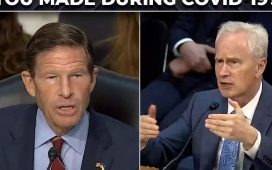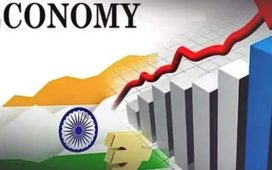
During her previous tenure at the finance ministry, Sitharaman navigated the economy through the Covid-19 pandemic by implementing the “Aatmanirbhar (self-reliant) Bharat” package and introducing measures such as production-linked incentive schemes for various sectors while maintaining fiscal prudence. Increasing capital expenditure to support the economy until private investment gained momentum contributed to the strong economic recovery.
In February, she presented a vote on account without any pre-election giveaways, aiming for a fiscal deficit of 5.1% of GDP in FY25. She will face the challenge of managing fiscal pressures within the new coalition government while addressing the growing demand for cash transfers to alleviate rural distress, which has been advocated by opposition parties. The BJP-led NDA secured 293 seats in the 543-seat lower house of Parliament, with the BJP alone winning 240 seats, falling short of the majority mark of 272. Many think the BJP’s weaker-than-expected performance at the polls may see it shift toward more populist spending measures in the budget. There are expectations that she should cut income tax and offer sops for the poor to boost private consumption as well as spend money to create jobs. Private consumption — which includes spending by households and businesses — expanded 4% in the past fiscal year, less than half the 8.2% pace of economic growth in the period.
Will Sitharaman stick to her typical approach now when she is about to present the full budget for 2024-25? Having posted a better-than-budgeted fiscal deficit thanks to buoyant tax collections, Sitharaman and her team are being watched to see if the government intends to speed up the move towards a 4.5% fiscal deficit. Against revised estimates of 5.8% of GDP last year, the Centre closed the year with a deficit of 5.6%. For the current fiscal year, the government has set a target of 5.1% and the revenue mop-up so far is expected to help it achieve the target, especially amid projections that GDP growth may turn out to be higher than the budgeted level.
Below are some of her statements in the past few months which can give important clues to the shape of Sitharaman’s upcoming budget.
What all Sitharaman has said
She will need to balance fiscal pressures in the new coalition government and a growing chorus for cash transfers to alleviate rural distress – in the wake of such pledges by opposition parties. Sitharaman, however, is likely to stick to numbers provided in the Interim Budget. This is what she said in an interview to ET before the Lok Sabha elections.
“That’s a commitment given even in the vote on account, which was given earlier in the year. And the party’s manifesto and the governance issue run in parallel. I am confident we will be able to stick to them,” Sitharaman had said in an interview to ET which appeared on April 19, 2024.
Speaking on the BJP’s manifesto, she had underlined the fiscal commitment of the government. “The overall manifesto has looked at schemes with a sense of responsibility. PM Modi is known for inclusive growth, making sure he covers sections in need of empowering them with greater resources. But equally, he’s never known for profligacy. Everything that we put in the manifesto is clearly worked out with a sense of responsibility that the taxpayers’ money should be used efficiently,” she said.In May, amid a flurry of announcements of freebies and doles promised by political parties, led by the Congress, Sitharaman said the Modi government intends to continue to maximise the value and impact of hard-earned taxpayer money, ensuring it is put to the best possible use for the benefit of all.
After assuming charge as the finance minister, she said while speaking about the priorities of the government that the government is committed to ensuring “ease of living” for citizens and will continue to take further steps in this regard. This could point at some income tax relief to the middle class.
There is a demand to give tax relief to investors on capital gains. However, speaking at the BSE’s Viksit Bharat event in May, Sitharaman had sidestepped a question posed to her in this regard. She had warned retail investors of the perils associated with the derivatives market stressing that “unchecked explosion” in the riskier futures & options (F&O) may potentially create problems in household finances. Given her views, it’s possible she could try to rein in the F&O frenzy with higher taxes.
Sitharaman’s emphasis on reforms is likely to continue, especially in the light of the upcoming budget being envisioned as a roadmap for India’s developmental journey to 2047. “In the full budget in July, our government will present a detailed roadmap for our pursuit of ‘Viksit Bharat’,” she had said in her interim budget speech in February.
Sitharaman’s enlarged fiscal space
Experts think Sitharaman has more fiscal space now to back fiscal discipline with popular demands from the budget such as income tax relief and sops for rural India. Defying predictions made by analysts, India’s GDP grew at 7.8 percent annually in the last quarter of FY24. The government now estimates the overall growth rate for FY24 to be 8.2 percent, Add to that buoyant tax collections, controlled inflation and a record Rs 2.1 lakh crore dividend from the Reserve Bank of India. Experts think all that gives her space enough to adjust to pressures on various counts.
“But since the interim budget, some of the fiscal realities have become favorable due to faster growth and the surprise Rs 2.1L crore dividend transfer from RBI, which affords govt incremental leeway to spend without compromising on the committed path of fiscal consolidation. That will support growth, keep the cost of govt borrowings in check and support the efforts of RBI to come closer to its medium-term CPI-based inflation target of 4% on a durable basis. Fiscal consolidation is crucial as India has the highest debt/GDP ratio among similarly rated sovereign nations. GOI should, therefore, stay on that course,” said Dharmakirti Joshi, the Chief Economist, CRISIL Ltd.
(With inputs from TOI)
Budget FAQs
What was the important message conveyed by Nirmala Sitharaman’s interim budget?
The important message conveyed by Nirmala Sitharaman’s interim budget was prudence over populism.
How did Nirmala Sitharaman navigate the economy during her previous tenure at the finance ministry?
Nirmala Sitharaman navigated the economy through the Covid-19 pandemic by implementing the ‘Aatmanirbhar Bharat’ package and introducing measures like production-linked incentive schemes while maintaining fiscal prudence.
What was the fiscal deficit target set by Nirmala Sitharaman for FY25?
The fiscal deficit target set by Nirmala Sitharaman for FY25 was 5.1% of GDP.
What challenges will Nirmala Sitharaman face in managing fiscal pressures within the new coalition government?
Nirmala Sitharaman will face the challenge of managing fiscal pressures within the new coalition government while addressing the growing demand for cash transfers to alleviate rural distress.











